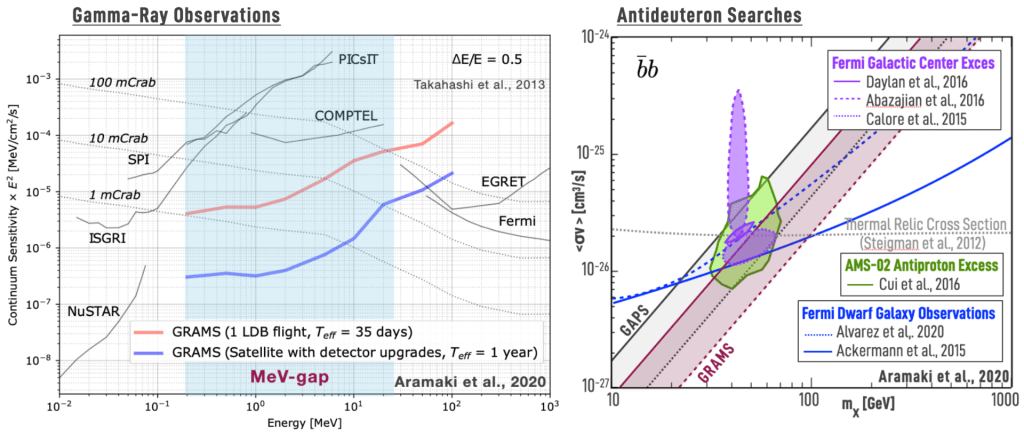GRAMS (Gamma-Ray and AntiMatter Survey) Project
Multi-messenger and time-domain astronomy are the keys to understanding our Universe. However, the MeV gamma-ray energy range, a crucial missing observational window to realizing this, has long been under-explored due to the lack of large-scale detectors to efficiently reconstruct the dominant gamma-ray interaction mode in this energy range — Compton scattering.
The GRAMS Project, one of the NASA Physics of the Cosmos missions, aims to deliver unprecedented sensitivities to astrophysical observations with MeV gamma rays and indirect dark matter searches with antimatter. With a cost-effective, large-scale Liquid Argon Time Projection Chamber (LArTPC) detector, GRAMS can have extensively improved sensitivities to MeV gamma rays and antinuclei compared with previous missions. GRAMS was recently selected for the NASA APRA-2022 (Astrophysics Research and Analysis) program, which includes the detector development and the prototypeflight in 2025/2026.

SCIENCE OBJECTIVES AND IMPACT
The GRAMS project aims to break through existing technological barriers and overcome this challenge with the LArTPC detector using a Compton camera. The LArTPC technology, successfully developed for underground dark matter/neutrino experiments over the last two decades, offers an affordable, scalable, and full-sky-reach solution for a Compton telescope concept. With this technology, GRAMS is capable of providing more than an order of magnitude improved sensitivity to MeV gamma rays compared to current experiments with a single long-duration balloon flight. GRAMS could potentially be the first to detect MeV gamma rays from the evaporating Primordial Black Holes (PBHs) and neutron star mergers associated with gravitational waves and from Galactic neutron star merger remnants.
Additionally, the GRAMS detector is optimized to measure cosmic-ray antinuclei produced by dark matter annihilation. The low-energy antideuteron and antihelium measurements can provide essentially background-free dark matter signatures while exploring a new dark matter parameter space. GRAMS could shed light on the puzzling excesses in dark matter searches, such as the Fermi gamma-ray and AMS-02 antiproton excesses discussed explicitly in Snowmass 2021.
We are currently building and testing a small-scale LArTPC for the prototype flight scheduled in 2025/2026 to demonstrate the detection concept and background rejection techniques. The prototype detector, MiniGRAMS (30 cm x 30 cm x 20 cm), will be deployed in the first science balloon flight, followed by the full-scale (140 cm x 140 cm x 20 cm) science flight in the late 2020s as a precursor to a future LArTPC satellite mission.
Read more about GRAMS in the GRAMS concept paper: Astropart. Phys. 114 (2020) 107-114


